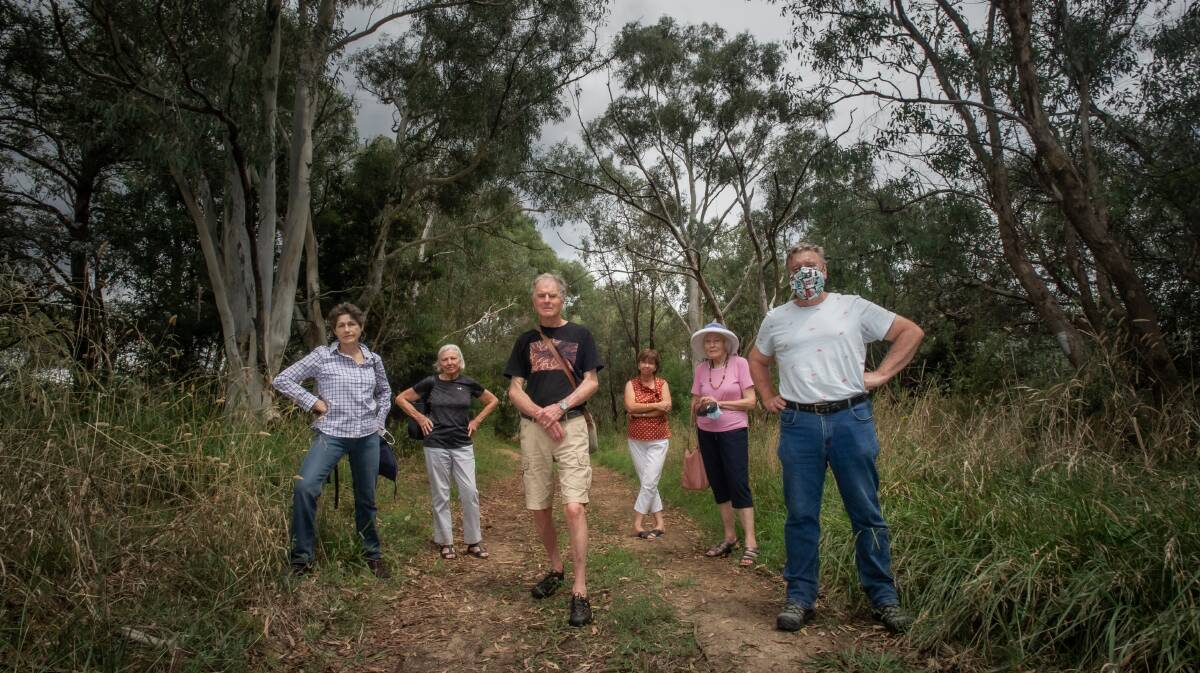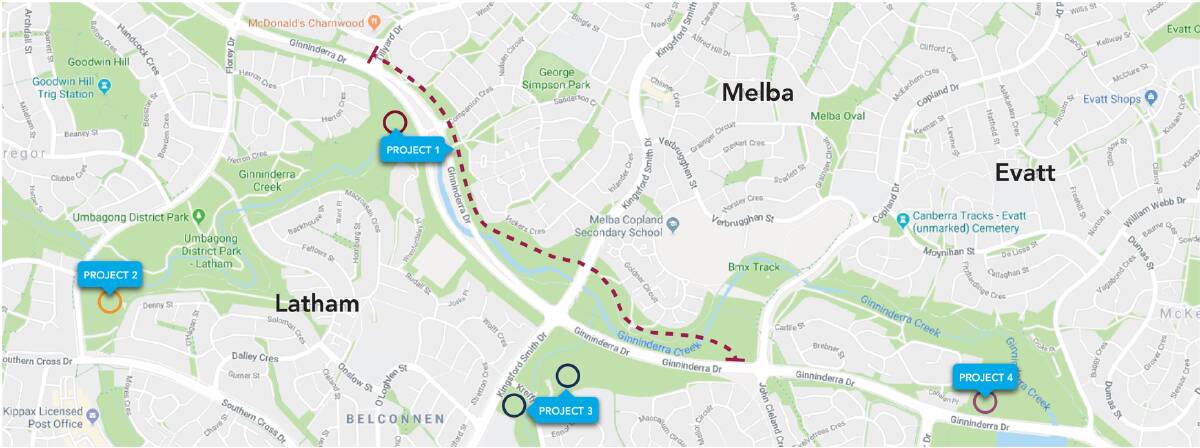
A group of Belconnen residents are calling for a moratorium on the building of four odour control units in Latham, Florey and Evatt - part of a sewerage upgrade project under way in Canberra's north-west.
The Icon Water upgrade will include the installation of a 230-metre pipeline across Ginninderra Creek and four 20m above-ground odour control units to ventilate the sewer.
Upgrade work and the installation of one unit in north Latham will result in 10.65 hectares of vegetation clearing, of which 0.46 is native vegetation, an environmental impact assessment shows.
Of that native vegetation, about 0.15 hectares is natural temperate grassland of the South Eastern Highlands, a threatened ecological community.
The assessment, which doesn't include installation of the other three units, found substantial tree removal would be required during the construction phase to allow for installation of the pipe.

Six threatened fauna species were identified as having potential habitat within the area, however, only the golden sun moth was identified during the assessment.
The project has the potential to result in a number of indirect impacts on biodiversity, including wildlife habitat connectivity, increased weed invasion and invasion and spread of pests, disease and pathogens, the report said.
"However, these impacts are considered unlikely to be significant," the report found.
The assessment found nearby residents would not detect odour for 99.9 per cent of the time during operation of the unit in Latham.

Icon Water said the installation of the other three odour control units did not require a formal environmental impact survey, however, the environmental impact of each project was assessed.
Icon Water has committed to replacing the trees at a 2:1 ratio of new trees to removed trees. Following the construction of the odour units the sites will be restored using dryland and native grasses.
Umbagong Protection Group president Chris Watson said the development would despoil the park along the Ginninderra Creek Corridor, an important site for the Ngunnawal people.
Mr Watson said he was concerned about the health impacts of the odour control units, which would be a shocking eyesore constructed in such close proximity.
He said in the event of a malfunction the control units could leak hydrogen sulfide, the toxic gas that builds up inside sewers.

"You wouldn't be doing this in Hyde Park or Central Park in New York or in front of Parliament House, would you?" he said.
"You've got to look at other alternative methods to stop corrosion of pipes."
Icon Water infrastructure manager Gerard Brierley said choosing a location for the units was quite restricted as they needed to be adjacent to the existing trunk.
He said their spacing was important for the management of air pressure in the sewer.
The units allow ventilation and filtration into the sewer to protect against corrosion, extending the life of the existing network.
Mr Brierley said the units ventilated the system from hydrogen sulfide, which made the sewer safer for maintenance crews to enter the network.
The units contain a carbon filtration system, which absorbs the hydrogen sulfide particles and releases a lower level of gas into the air.
"The existing network of sewers were built in the 1960s to service Gungahlin, Hall and Belconnen," Mr Brierley said.
"As a result of population growth, especially in Gungahlin, Hall and Belconnen areas, we're now nearing capacity of that sewer. Obviously, there's more expected growth in the area, including in the Ginninderra and Lawson Development area and in the Mawson area.
"So to ensure that we can keep servicing that growing population and protect our environment, we do need to make sure that we can safely dispose of our wastewater, and that ensures health, safety and wellbeing of our community.
"And so this is a this is a capacity upgrade of an old sewer."
Icon Water said alternative solutions would not be cost-effective.
"Sewers need to be ventilated to avoid the accumulation of gases which not only lead to pipe corrosion, but could present a danger to our crews and the environment if accumulated in large quantities," they said.
"Ventilation is the optimal solution commonly used by utilities."
Construction work began late last year following COVID delays. The project is scheduled for completion by the end of 2022.






